DE
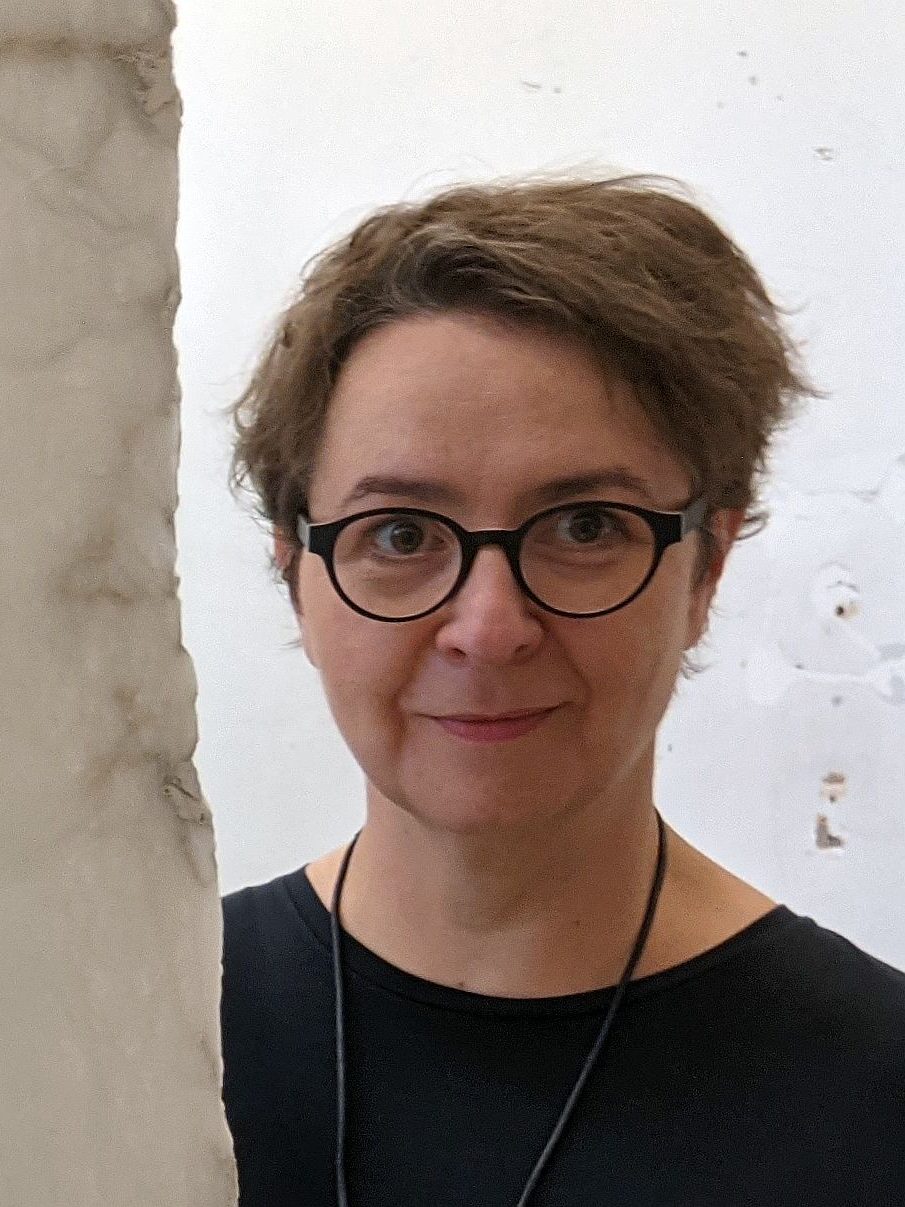
Prof. Dr. Aleksandra Lipińska
Project Manager
Aleksandra Lipińska is a substitute Professor of Early Modern Art History at the Institute of Art History of the University of Cologne. She obtained her PhD (2003) at the University of Wrocław (Poland) and her habilitation at the Technical University in Berlin (2021). Her research interests range from early modern northern european art, especially sculpture, to questions of artworks’ materiality, digital art history, and history of art history. She has studied various aspects of the material alabaster through her scholarly career, initially as material of export oriented Netherlandish workshops (Moving sculptures. Southern Netherlandish alabasters from the 16th to 17th centuries in Central and Northern Europe, Brill 2015). Her second monograph Alabaster. Studies in Material Meaning(s), focussing on the meanings attached to alabaster though the centuries, will appear 2023 in the Brill series ‘Studies in Art and Materiality’.

Jonathan Blumtritt M.A.
Coordination and Management CCeH
Jonathan Blumtritt studied Modern History, Economic and Social History as well as Computer Science at the Friedrich Schiller University in Jena and the Rheinische Friedrich Wilhelms University in Bonn. From 2011 forward he has been part of various Digital Humanities projects at the Cologne Center for eHumanties (CCeH). Since the founding of the Data Center for the Humanities in 2012/23, he has been responsible for coordinating, consulting, development of proposals and the curation of data. He worked as a research assistant in the BMBF-project KA3 from 2015-2019 where he supported the head of project with the coordination of technical developments. Since October 2019, he is part of the management team at the CCeH, as such he performs tasks for the AWK´s Digital Humanities Coordination Office, and is heavily involved in participation in the humanities consortia in the NFDI.

Tobias Mercer B.A.
Research associate CCeH
Tobias Mercer completed training as an IT specialist and subsequently studied Comparative Religious Sciences & Ancient American Studies/Ethnology (B.A.) at the Rheinische Friedrich-Wilhelms-Universität Bonn. Since 2016, he has been involved in various digital humanities projects including the collection coordination at the University of Bonn, where he was responsible for the support and development of the collection databases.
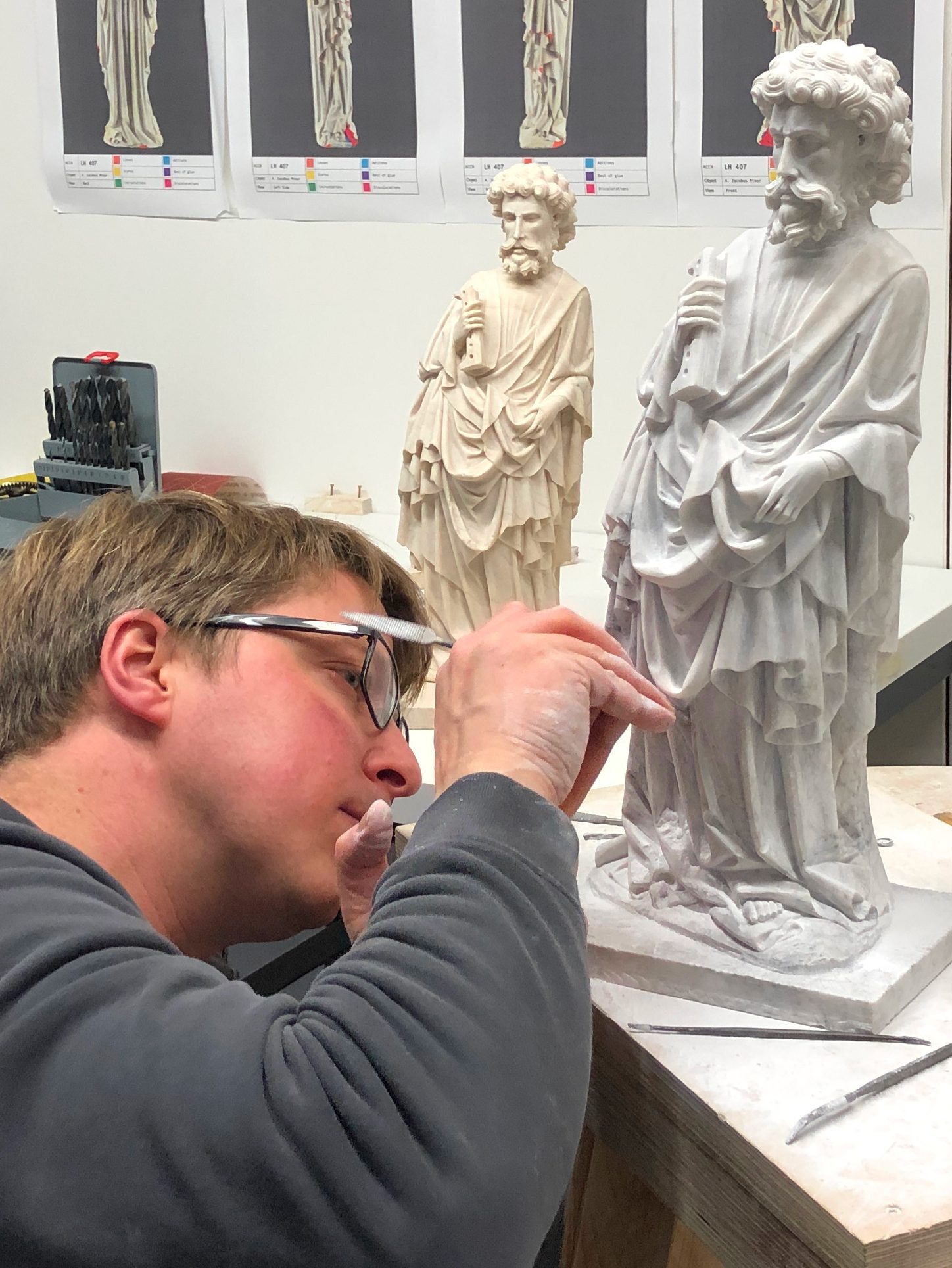
Thomas Hildenbrand
sculptor
1997 – 2000 state vocational school for wood sculptors, Oberammergau.
since then numerous cooperations with museums and other cultural institutions.
The sculptor Thomas Hildenbrand is a specialist in historical sculpting techniques.
In his workshop, numerous reconstructions of historical sculptures in materials such as wood, alabaster, terracotta plaster and stone have been executed in recent years.
A special interest is the research and interpretation of original work traces to achieve the most authentic, historical work process. For example, the experimental reconstruction of an apostle from the Rimini Altar in alabaster, for the Liebieghaus Skulpturensammlung / Frankfurt.

Undine Dömling B.A.
Research assistant
Undine Dömling studied art-history and history in Munich and Cologne. She acquired her bachelorthesis in 2022, in which she evaluated the account books of the art academy of Hanau with a special focus on the women that where taught at the school as well as the (female) teachers that taught at the academy.
FR
PD Dr. Wolfram Kloppmann
Project Manager on the French side (ANR-FRAL project)
Wolfram Kloppmann is project manager and scientific expert at the French National Geological Survey, BRGM. A graduate geologist (RWTH Aachen), he holds a PhD in isotope hydrogeochemistry from the University of Paris XI and a habilitation (HDR) from the University of Orléans. He has been with the BRGM since 1996. Head of the isotope laboratory of the BRGM from 2011 to 2017.
His areas of expertise include chemistry and isotopic properties of deep natural groundwaters and gases, water-rock interactions in groundwater, isotopic fingerprinting of water pollutants, paleohydrology. A particular research focus is currently on geomaterials in cultural heritage, and building stone weathering. Most of his research involves the use of environmental isotopes. Since 2010, he has been collaborating with colleagues at the Louvre, LRMH, CICRP, and numerous European and American museums in projects on the origin of alabaster in medieval and early modern European sculpture.
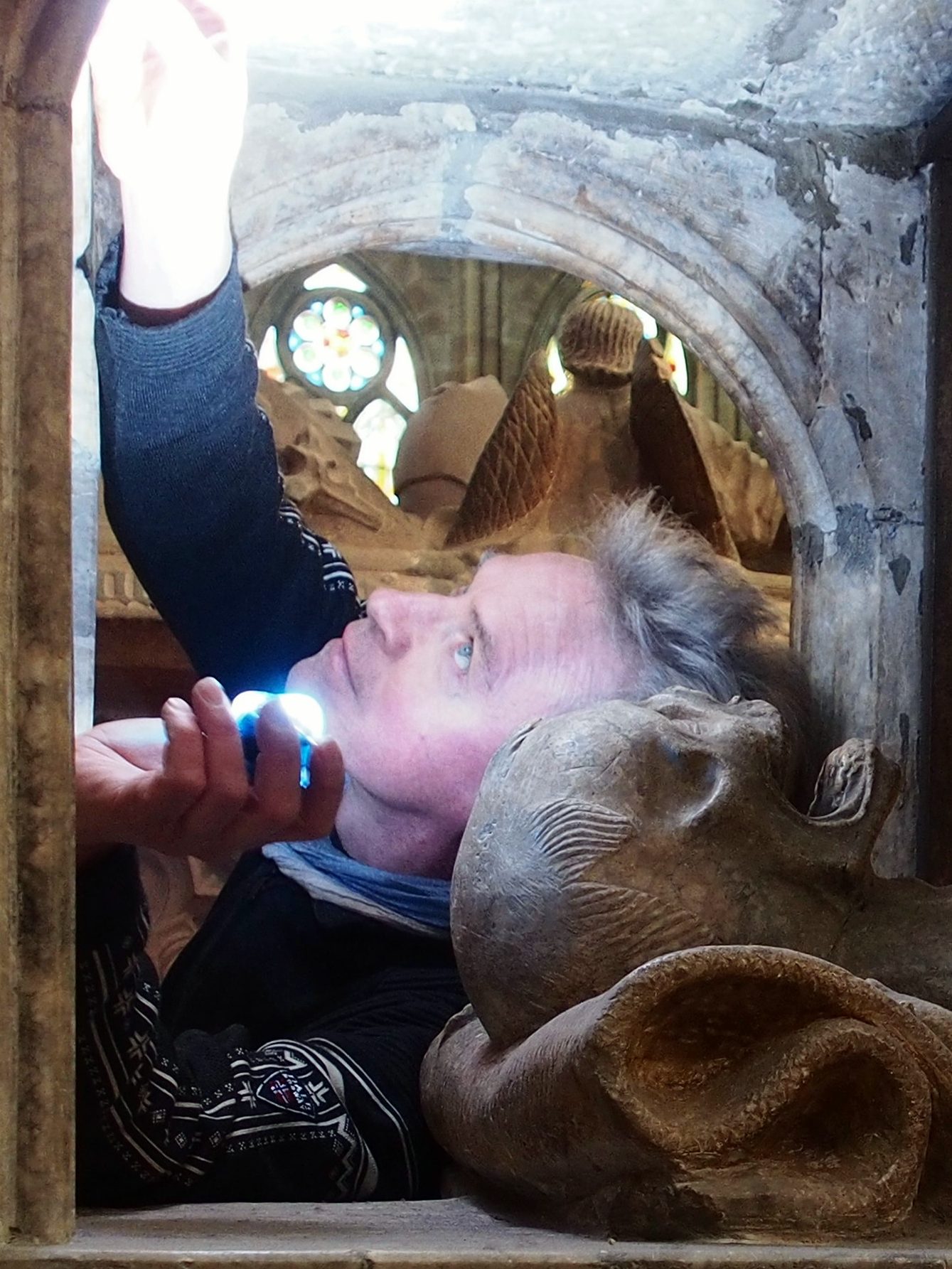
Dr. Uliana Naumenko
Scientific collaborator
Uliana Naumenko is a Senior Researcher at the Geological Institute of the Academy of Sciences of Ukraine. She obtained her PhD in Earth Sciences in 2010, specializing in the geology of mineral deposits in Ukraine. Dr. Naumenko has authored a series of maps on mineral resources included in the National Atlas of Ukraine. Recently, she has been involved in international projects with the Museum of the Earth in Warsaw, Poland, focusing on the preservation of geological heritage.
One of the last projects was the study of amber placers in Ukraine, encompassing investigations into the conditions of their formation and transformations of ancient resins. She has authored a book titled “Terminology of Amber-Succinite Deposits and Other Mineral Types of Fossil Resins.” Since 2022, Dr. Naumenko has been engaged in studying the geological conditions and geochemical characteristics of gypsum and alabaster in Western Ukraine.
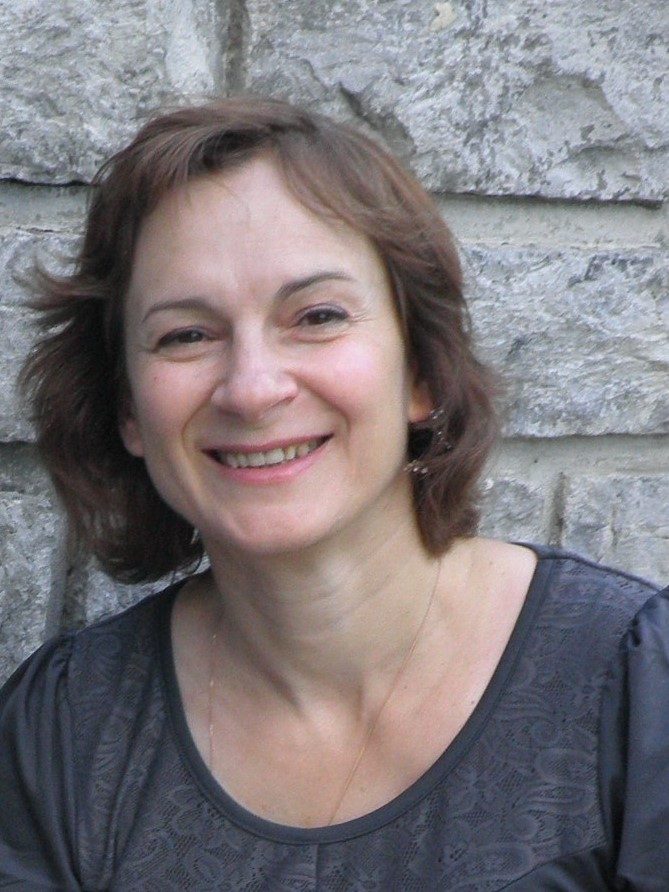
Anne-Thérèse Montech
Isotopic analyses of sulfur and oxygen in alabaster samples.
Anne- Thérèse Montech is an isotope geochemistry engineer at the Laboratoire des Isotopes Stables of the BRGM in Orléans. She is specialized in the preparation and isotopic analysis of sulfates and nitrates in water and solids (CF-IRMS). She is also responsible for optimizing methods of sample collection, storage and preparation, as well as for preparing analysis reports and procedural instructions.

Guillaume Wille
Micro-characterization of alabaster samples (mineralogy, chemical mapping) with SEM-EDS-Raman.
Guillaume Wille holds a PhD in Chemistry – Materials Science from CRMHT (CNRS) / University of Orléans (2002). He is a research engineer in microcharacterization of geomaterials at BRGM. He is in charge of the electron microprobe laboratory, SEM-Raman coupling and leads research studies and projects. He is a project leader, co-supervisor of doctoral theses and dual degree programs, and an educational supervisor.

Olivier Rolland
Documentation and analysis of processing traces on alabaster sculptures, creation of a thesaurus of processing techniques and traces.
Diploma of Conservator-Restorer of Sculpture at the School of Arts of Tours (1990). Since 1990, Olivier Rolland is a freelance conservator-restorer of sculpture specializing in stone, plaster, terracotta and their polychromies, regularly commissioned for studies or restorations of important works or monuments (exterior marble of the Palace of Versailles, Portals of Chartres Cathedral, Cloister Saint-Trophime in Arles, portal and cloister of Moissac, west portal of the Basilica of Saint-Denis, west facade of Bourges Cathedral, castles of Chenonceau, Azay-le-Rideau…). Projects on the restoration of sculptural ensembles in alabaster and supervision of master’s theses on the subject.
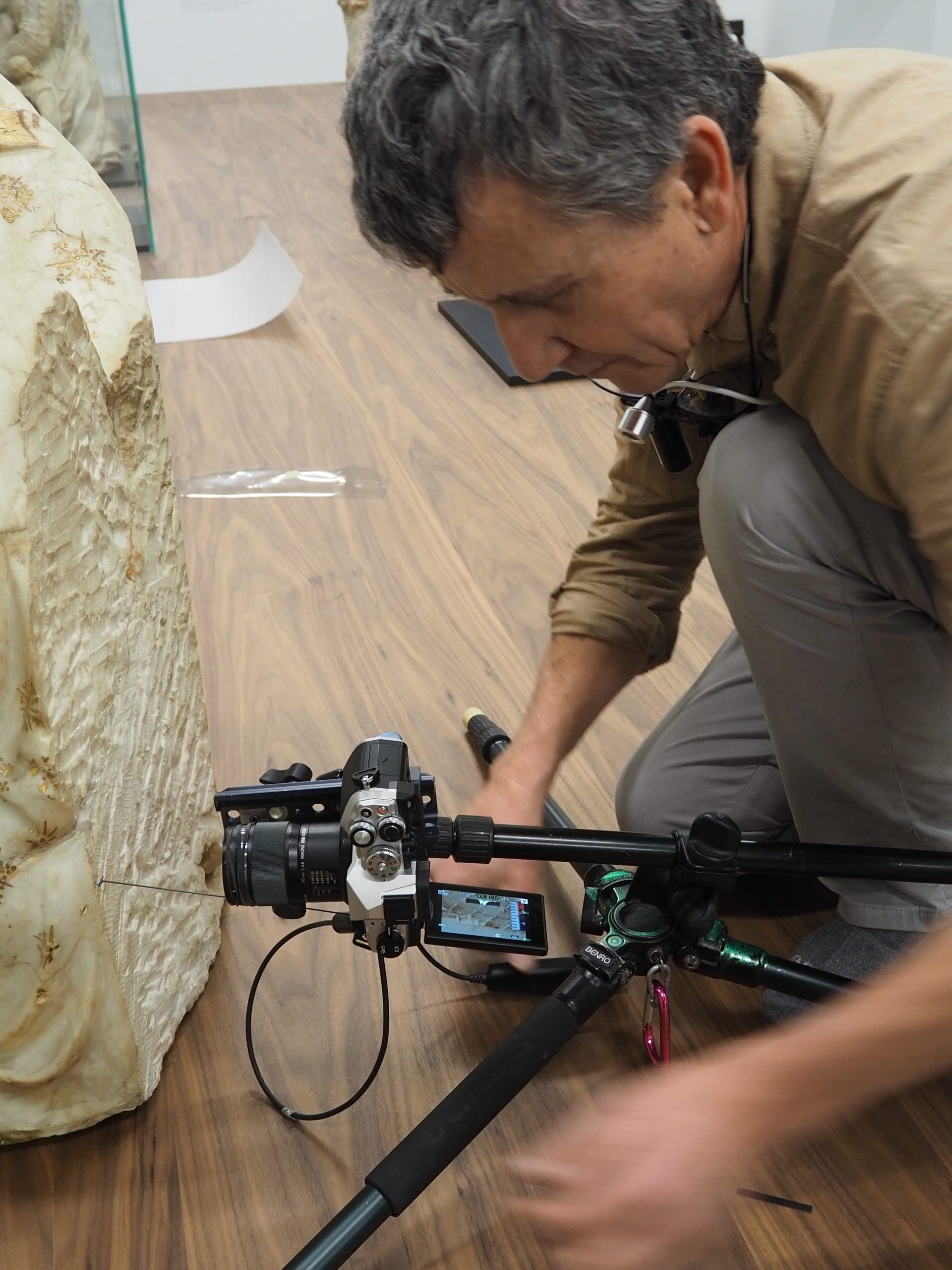
Catherine Guerrot
Isotope investigations on alabaster samples, strontium analyses with TIMS
Catherine Guerrot, who received her PhD from the University of Rennes I in 1989, joined the BRGM in 1990 after an assistant position at the Swiss Federal Institute of Technology (ETH) in Zurich (Switzerland). As an expert in geochronology, she ensures the quality and interpretation of geochronological data obtained in the framework of national and international projects. She is also responsible for the development of analytical methods in isotope geochemistry and their application in geology and environmental fields.
